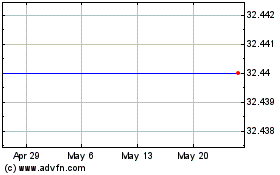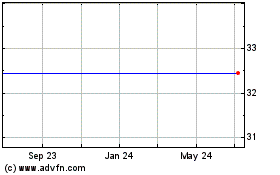2nd UPDATE: Discover Shares Lower As 4Q Loan Balances Shrink
December 16 2010 - 2:09PM
Dow Jones News
Discover Financial Services (DFS) reported a fiscal
fourth-quarter profit of $350 million as improving credit trends
allowed the company to free up funds in reserves and cardholders
spent more.
Investors, disappointed by Discover's shrinking book of loans,
initially drove the company's shares down about 4%. Its stock
recouped some of the losses, recently trading at $18.73, down
2.1%.
Discover's results underscore the sliding revenue trend that is
plaguing the card industry, which is facing shrinking loan
balances. In coming quarters, investors will continue to examine
the proportion of profits coming from an actual increase in
revenue--a sign of growth--and the bump in profits from lenders
releasing reserves as credit trends improve. Discover's fourth
quarter got a boost from a $414 million reserve release.
The company's profits from lowering its loss reserves reinforce
the trend observed earlier this year in companies, including
Capital One Financial Corp. (COF) and American Express Co. (AXP),
whittling down their reserves amid improving credit trends.
"Obviously [Discover] posted strong results but much of that was
on the back of reserve release," said Sanjay Sakhrani, an analyst
at Keefe, Bruyette & Woods, in a note Thursday.
For the fourth quarter, the Riverwoods, Ill., company reported a
profit of $349.6 million, or 64 cents a share, down 1% from $352.5
million, or 60 cents a share, a year earlier. The results from a
year ago were bolstered by an after-tax gain of about $285 million
related to an antitrust settlement. Analysts polled by Thomson
Reuters forecast, on average, earnings of 43 cents a share for the
latest quarter.
Discover's net revenue, on an adjusted basis, declined 8% from a
year ago to $1.6 billion. Average credit card loan balances dropped
6% to $44.7 billion during the same period.
"I wish that the [economic] recovery was faster but at least we
are recovering," said David Nelms, Discover's chief executive, in
an interview.
Seeking revenue growth, the company also has been ramping up its
business in private student and personal loans. Nelms anticipates
growth of 5% to 10% in overall loan balances over the next 12
months, with card loans growing in the "low single digits."
Discover's book of average loans totaled $48.6 billion as of Nov.
30.
Unlike most other card companies that either issue plastic or
process the transactions, Discover and bigger rival American
Express do both. Therefore, in addition to the interest Discover
earns on its credit card loans, a chunk of its revenue comes from
fees it charges banks and merchants, such as grocery stores or gas
stations, to process card payments.
The more times consumers use Discover-branded cards and the more
they charge on them, the more the company earns in fees. Discover
customers spent $23 billion on their cards, a 6% jump from a year
ago.
Discover reported lower delinquencies and charge-offs, or loans
that the company doesn't expect to collect on. Charge-offs for the
fourth quarter totaled 6.58%. The write-off rate remains elevated
but is lower than the 8.43% a year earlier and the 7.18% in the
third quarter.
Loans at least a month past their due payments totaled 3.89%,
down from 5.31% a year ago and 4.16% in the prior quarter. The
delinquency rate is important for issuers because higher
delinquencies force them to put away capital to reserve for
potential losses; ultimately, companies must write off loans if
customers can't pay up.
Discover's provision for credit losses, at $383 million, fell
70% from a year earlier, on an adjusted basis.
In September, the company agreed to acquire private student-loan
operations of Student Loan Corp. (STU) for $600 million and $4.2
billion of the company's assets for 91.5 cents on the dollar. The
acquisition will add nine cents to earnings per share in 2011,
Discover said.
-By Aparajita Saha-Bubna, Dow Jones Newswires; 617-654-6729;
aparajita.saha-bubna@dowjones.com
(Matt Jarzemsky contributed to this report.)
Student Loan (NYSE:STU)
Historical Stock Chart
From Apr 2024 to May 2024

Student Loan (NYSE:STU)
Historical Stock Chart
From May 2023 to May 2024
